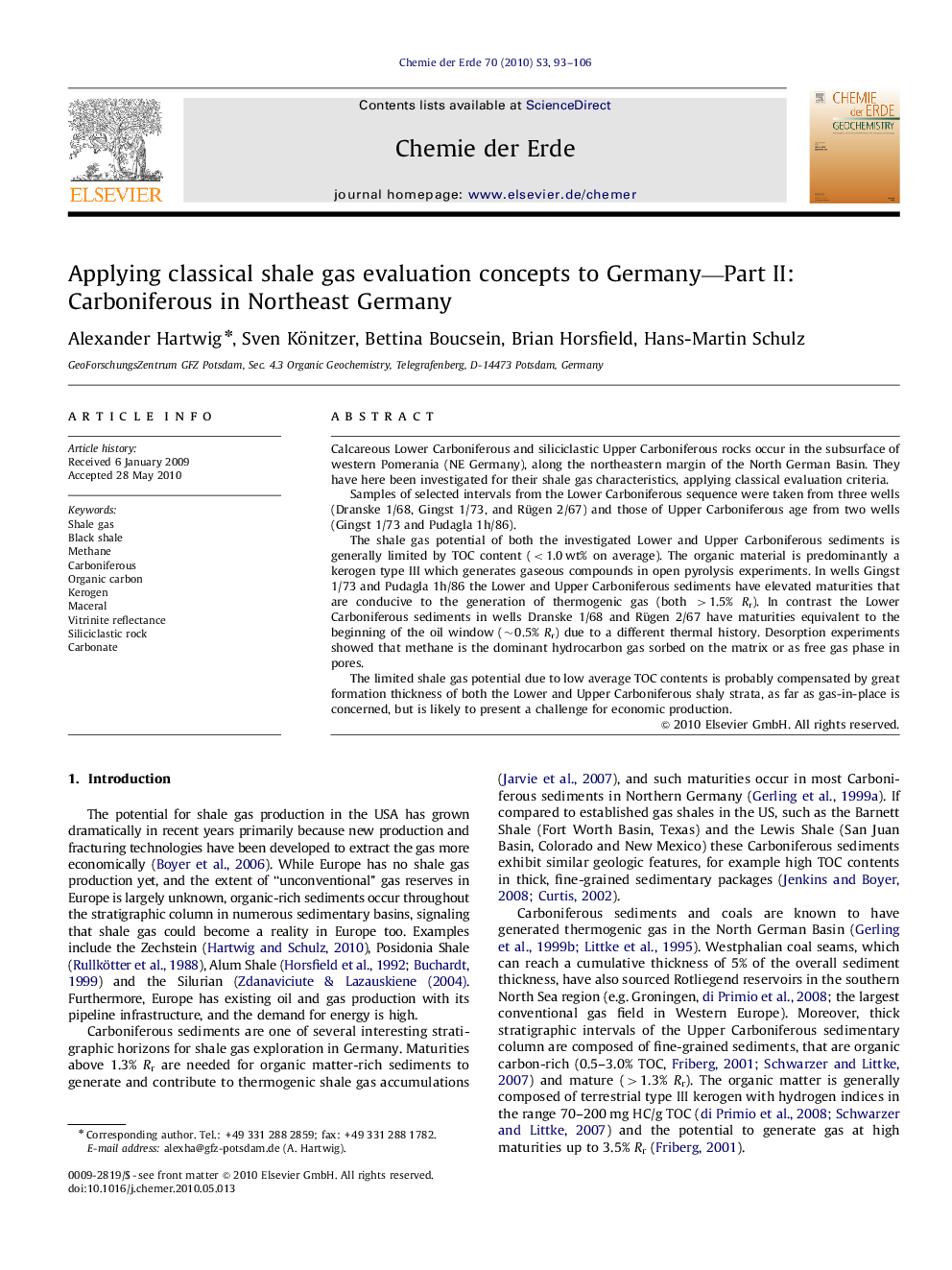| Article ID | Journal | Published Year | Pages | File Type |
|---|---|---|---|---|
| 4407105 | Chemie der Erde - Geochemistry | 2010 | 14 Pages |
Calcareous Lower Carboniferous and siliciclastic Upper Carboniferous rocks occur in the subsurface of western Pomerania (NE Germany), along the northeastern margin of the North German Basin. They have here been investigated for their shale gas characteristics, applying classical evaluation criteria.Samples of selected intervals from the Lower Carboniferous sequence were taken from three wells (Dranske 1/68, Gingst 1/73, and Rügen 2/67) and those of Upper Carboniferous age from two wells (Gingst 1/73 and Pudagla 1h/86).The shale gas potential of both the investigated Lower and Upper Carboniferous sediments is generally limited by TOC content (<1.0 wt% on average). The organic material is predominantly a kerogen type III which generates gaseous compounds in open pyrolysis experiments. In wells Gingst 1/73 and Pudagla 1h/86 the Lower and Upper Carboniferous sediments have elevated maturities that are conducive to the generation of thermogenic gas (both >1.5% Rr). In contrast the Lower Carboniferous sediments in wells Dranske 1/68 and Rügen 2/67 have maturities equivalent to the beginning of the oil window (∼0.5% Rr) due to a different thermal history. Desorption experiments showed that methane is the dominant hydrocarbon gas sorbed on the matrix or as free gas phase in pores.The limited shale gas potential due to low average TOC contents is probably compensated by great formation thickness of both the Lower and Upper Carboniferous shaly strata, as far as gas-in-place is concerned, but is likely to present a challenge for economic production.
